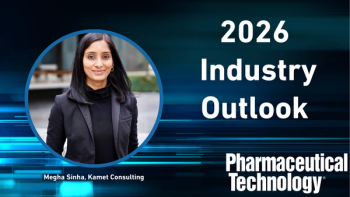
Pharmaceutical Technology Europe
- Pharmaceutical Technology Europe-07-01-2009
- Volume 21
- Issue 7
Thinking of theranostics?
Are manufacturers ready to deal with the economic and logistical challenges that accompany tailored therapeutics?
Interest in tailored therapeutics is on the rise with autologous therapies already driving demand for single-patient batch processing. Making these emerging treatments commercially viable, however, is a huge challenge.
Ian Fitzpatrick
Theranostics — a term formed by the combination of therapeutics and diagnostics — is used to describe the process of diagnostic therapy for individual patients; that is, testing patients to selectively tailor treatment according to their genotype and details of the disease that have previously not been differentiated. According to a report published by Visiongain (UK),1 theranostic solutions are playing an increasingly important role in pharmaceutical R&D, in particular, increasing safety, speeding up clinical development and facilitating regulatory compliance. Visiongain predicts that theranostics will exhibit strong revenue growth in the period 2007–2012, with significant investments being made by far-sighted companies in the pharmaceutical, diagnostics and biotechnology sectors. Although still in their early stages of commercial development, personalized medicines are expected to increasingly penetrate the healthcare market.
This rising interest has arisen from drug investigations that have demonstrated excellent results, but for a small percentage of the patient population. The ability to diagnostically select patients that will successfully respond to a treatment clears the way for development of a drug as a therapeutic, albeit to a smaller direct market. It is anticipated that many focused drugs will begin to emerge as a clearer understanding of modes of action identifies additional efficacious treatments for specific disease subpopulations. Consequently, the number of products is expected to increase. At the extreme end of this spectrum are therapies that have been created for an individual patient. Autologous cell therapies, for example, build on the patient's material to successfully avoid immunogenic responses. The entire batch management cost of such a therapy must be supported by treatment of a single patient. The challenge and opportunity is for biologics manufacturers to profitably produce smaller batches to address these markets. A streamlined pre-approval and production processes are needed.
The quality and cost dilemma
Manufacturers must not only consider the economic implications of delivering these tailored therapies, they must also figure out how this can be done without compromise of quality. To address these challenges, fully contained process automation within functionally closed singleuse systems have emerged to deliver patientspecific therapeutics viably. Many automation capabilities are widely available at a subsystem level. Complete segregation between products and quality integrity however only occurs when equipment and disposables dedicated to the details of the process are integrated comprehensively. This approach packages a cGMP process into a 'vending machine' that can be duplicated for increased patient throughput and relocated to different sites and regions with minimal revalidation. Ongoing quality and cost management can be achieved through the centralized process owner that supplies prepackaged reagents, disposable sets and processing platforms, whilst quality improvements can be rolled out through centralized control system management. Ownership of the disposable design and the equipment configuration allows economies of scale to be realized. With increasing patient numbers, aggressively low processing costs can be achieved.
These strategies may also be considered for biologic production. Technologies are being created to put fermentation production into singleuse systems, particularly around pilot manufacture where the pressure to create small batches of many different products is already being addressed. There are also many new initiatives in downstream processing, where isolation and purification steps are being packaged into single-use systems and technologies, such as hydrogel membranes to address the high overheads of columnbased separations. Manufacturers must, therefore, question which features a 'flexible' manufacturing system would need to economically deliver process integrity and batch record capture.
Pharmaceutical manufacture of complex therapeutics is rapidly evolving, with newer manufacturing processes promising greater flexibility at a lower cost. As the manufacturing industry continues to evolve, companies will be able to take advantage of the rising popularity of tailored therapeutics by implementing processes that will allow them to profitably and efficiently deliver theranostic medicines.
Reference
1. Theranostics 2007–2012 (Visiongain UK, London, UK, 2007).
Articles in this issue
over 16 years ago
Expression systems royalties battleover 16 years ago
Dynamic avalanching accurately assesses flowability and qualityover 16 years ago
Are we moving towards global patenting?over 16 years ago
The Pharma Top 50over 16 years ago
Penny-wise, pound-foolishover 16 years ago
Pharma's Facebookover 16 years ago
We invite you to Link inover 16 years ago
Human error costs industry billionsover 16 years ago
EU and US unite against rare diseasesNewsletter
Get the essential updates shaping the future of pharma manufacturing and compliance—subscribe today to Pharmaceutical Technology and never miss a breakthrough.




